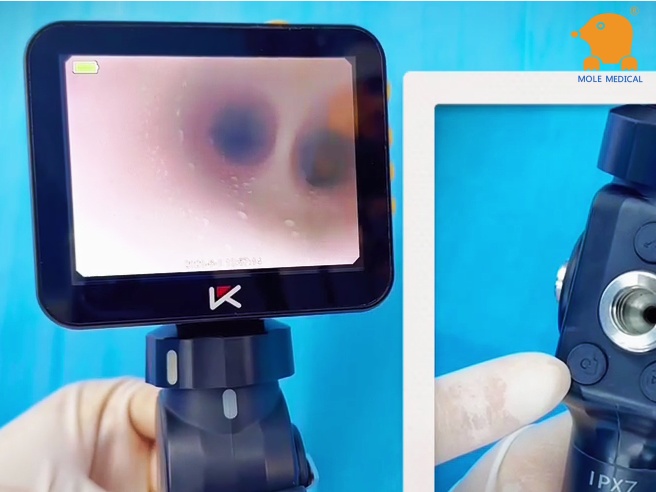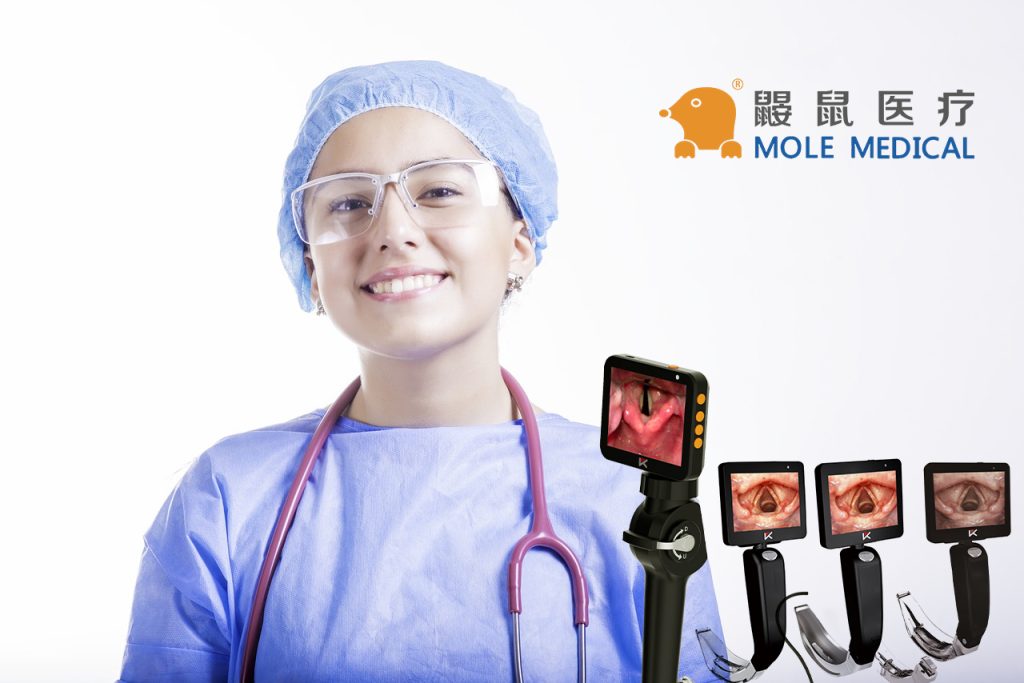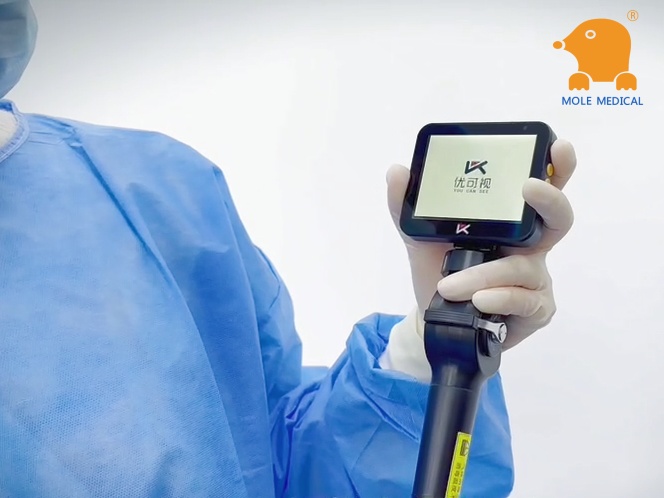Mole Medical: The Application Value of Electronic Bronchoscopy Alveolar Lavage in Children with Severe Pneumonia and Mycoplasma Pneumonia
Jul 18, 2025
Bronchoscopic lung lavage has become an important treatment method for severe pneumonia caused by mycoplasma in children. This technique mainly involves using a flexible electronic bronchoscope to enter the child’s airway and, under direct vision, remove the obstructive mucus plugs and inflammatory secretions. At the same time, lavage fluid is collected for pathogen detection. Compared with traditional treatment methods, this technique can directly act on the affected area and rapidly improve airway obstruction. A clinical study by Mole Medical found that the cure rate of children who received bronchoscopic lavage could reach 94.11%, which was much higher than the 52.54% of conventional treatment, and it could also effectively shorten the hospital stay.

During the specific operation process, doctors will first determine the location of the lesion through chest CT, and then insert the bronchoscope through the nasal cavity into the airway under sedation or anesthesia. During the operation, warm normal saline will be used for segmental lavage, and 5-10 mL of liquid will be injected and immediately aspirated after each injection. This process will be repeated until the obstruction is completely cleared. The entire process usually takes only 8-10 minutes, and the child has good tolerance. Mole Medical reminds you that the temperature of the lavage fluid should be strictly controlled at 37
℃
to avoid irritating the airway mucosa. After the operation, children need to continue receiving antibiotic and glucocorticoid treatment.

The treatment advantages of electronic bronchoscopic lavage mainly lie in three aspects: first, it can directly remove inflammatory secretions and pathogens from the airway; second, it can improve local microcirculation; third, it can obtain accurate pathogen specimens. Research data shows that children who received this treatment not only improved their symptoms faster, but also had more significant decreases in inflammatory indicators such as C-reactive protein and lactate dehydrogenase. More importantly, this technique can effectively prevent the occurrence of complications and avoid recurrence of the disease.
Safety is the most concerned issue for parents. Clinical observations have shown that with standardized operation, the complication rate of electronic bronchoscopic lung lavage is extremely low. In the study, none of the 102 children who received treatment had airway damage, bleeding, or worsening of infection. In contrast, 5.08% of children in the conventional treatment group needed to be hospitalized again due to recurrence of the disease. Of course, this technique requires an experienced respiratory endoscopy team to operate and strictly follow the indications and contraindications.

With the development of medical technology, the application of electronic bronchoscopic lung lavage in pediatrics is becoming increasingly widespread. Mole Medical has found that for children with severe pneumonia caused by mycoplasma, early intervention treatment can significantly improve the cure rate and reduce sequelae. It is recommended that for children who meet the indications, bronchoscopic lavage treatment should be performed promptly on the basis of adequate antibiotic and glucocorticoid treatment. This technique has the characteristics of small trauma, quick effect, and high safety, and is worthy of clinical promotion and application.
Categories
Latest Articles
-2.jpg)
FDA & CE Approved Video Laryngoscope: What Makes It Stand Out?
Introduction In high-pressure emergencies and precision-driven operating rooms, video laryngoscopy is revolutionizing airway management. Mole Medical’s FDA and CE-certified technology replaces tactile-dependent “blind intubation” with real-time visual navigation – enhancing safety, accuracy, and clinical outcomes worldwide. Why Certification Matters Mole Medical’s dual certifications validate its global compliance and performance: FDA Clearance: Rigorous validation of safety/efficacy ... Read more

Mole Medical Showcases Advanced Endoscopy Solutions at CMEF Autumn 2025, Driving Global Partnerships
Guangzhou, China – September 26-29, 2025 – The 92nd China International Medical Equipment Fair (CMEF Autumn) concluded successfully on September 29th at the Canton Fair Complex in Guangzhou. Mole Medical Technology Co., Ltd. (Mole Medical) made a significant impact at the event, drawing global medical professionals and partners to its booth (Hall 2.1, Stand Q24) ... Read more

How to Use Disposable Ureteroscopes Safely and Efficiently
In the field of urology, the application of disposable electronic ureteral-kidney pelvis endoscopy catheters is leading the technological innovation in minimally invasive surgeries. According to the 2024 multi-center research data from China’s urology department, among the over 5,000 surgeries included, the patient group using disposable catheters performed significantly better in key indicators such as operation ... Read more

Breaking Through the Bottleneck of Decontamination On the Irreplaceability of Disposable Bronchoscopes in Emergency Scenarios
During the intense emergency rescue, bronchoscopy technology is the core method for handling airway emergencies. However, the traditional reprocessing cycle of reusable bronchoscopes, which lasts for 60-90 minutes (including cleaning, disinfection, drying, and testing), has become a fatal bottleneck restricting the efficiency of rescue. Mole Medical has discovered that with the clinical popularity of disposable ... Read more

Correlation Analysis of the Duration of One-time Flexible Ureteroscopy for Stone Removal with Postoperative Pain and Hospital Stay
Among the minimally invasive treatment methods for upper urinary tract stones through natural orifices, one-time flexible ureteroscopic lithotripsy (RIRS) has been widely used in clinical practice in recent years due to its avoidance of cross-infection risks and performance degradation associated with repeated use of instruments. This technique involves inserting a thin, flexible endoscope through the ... Read more



